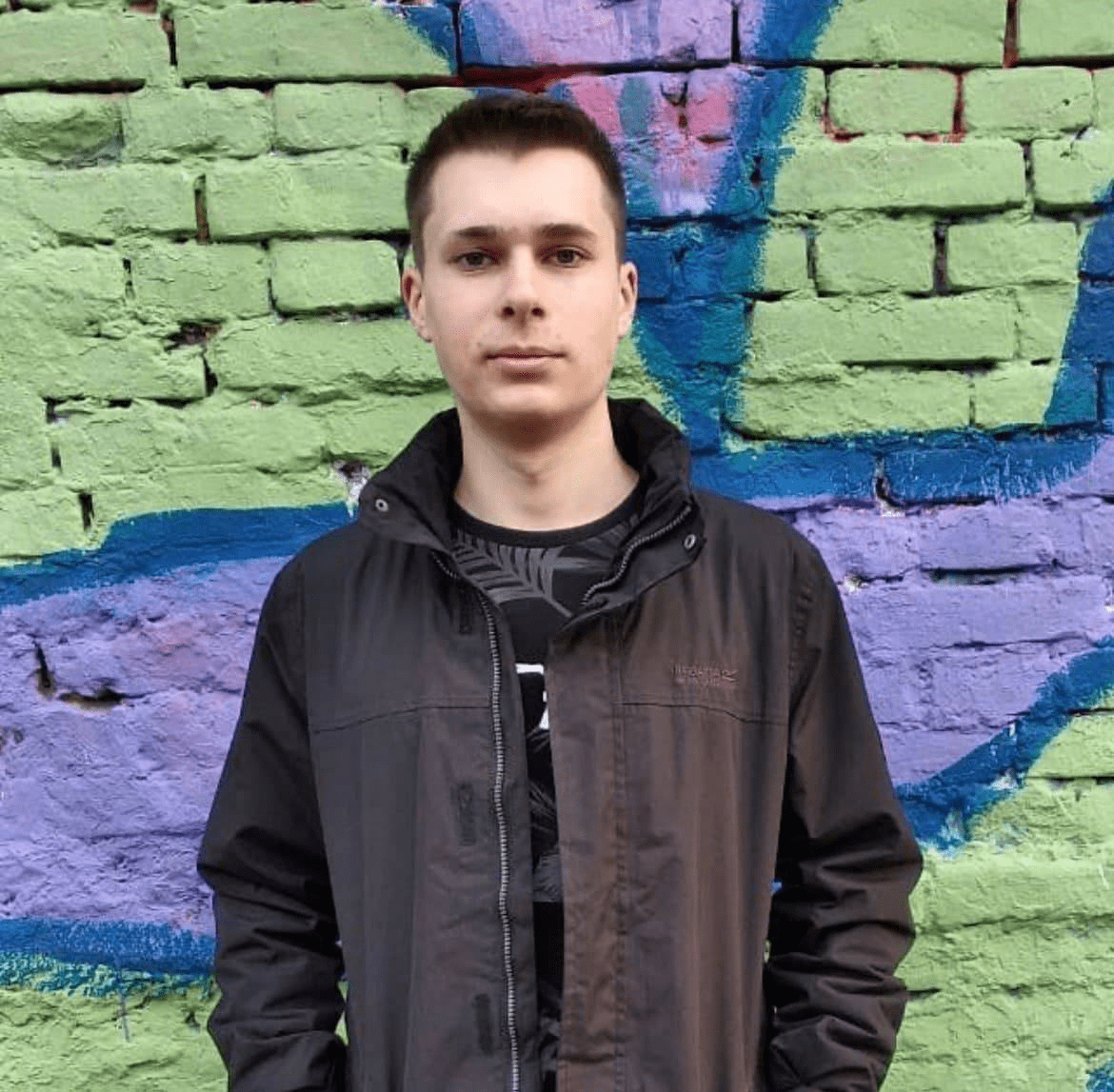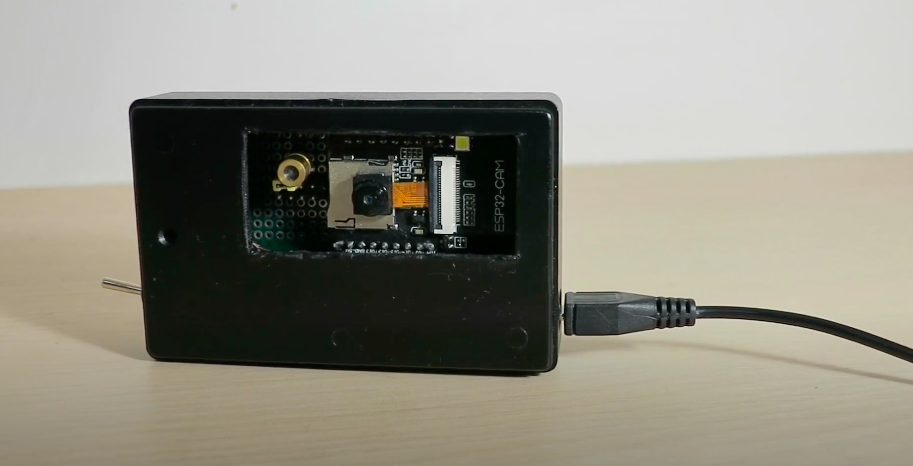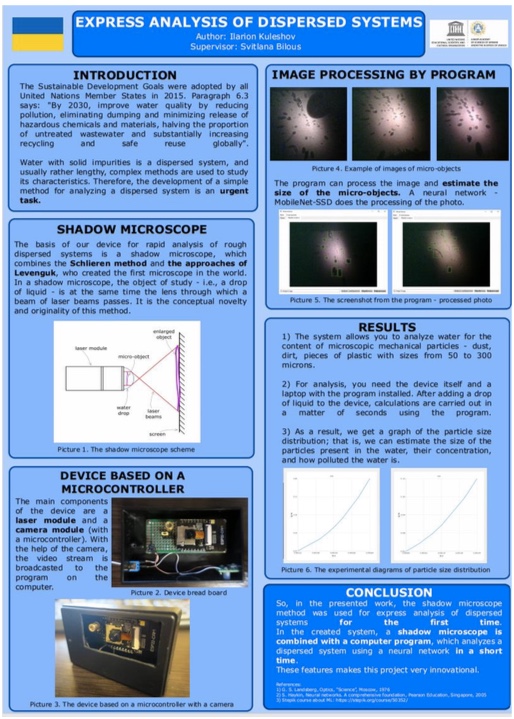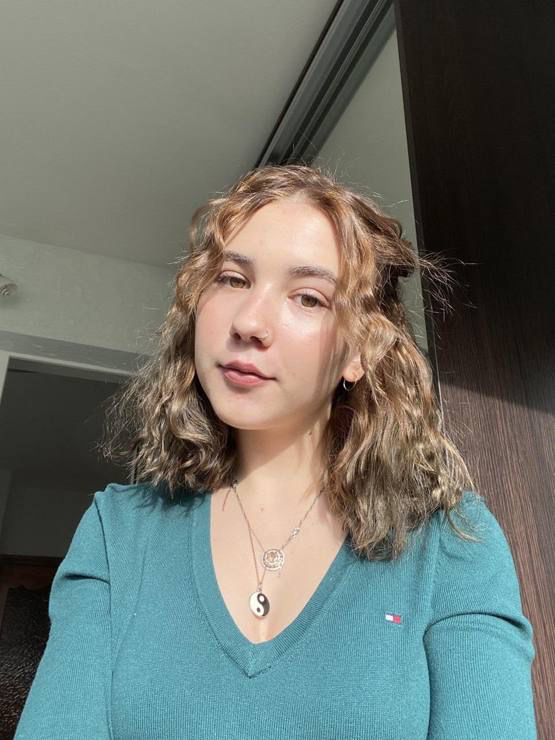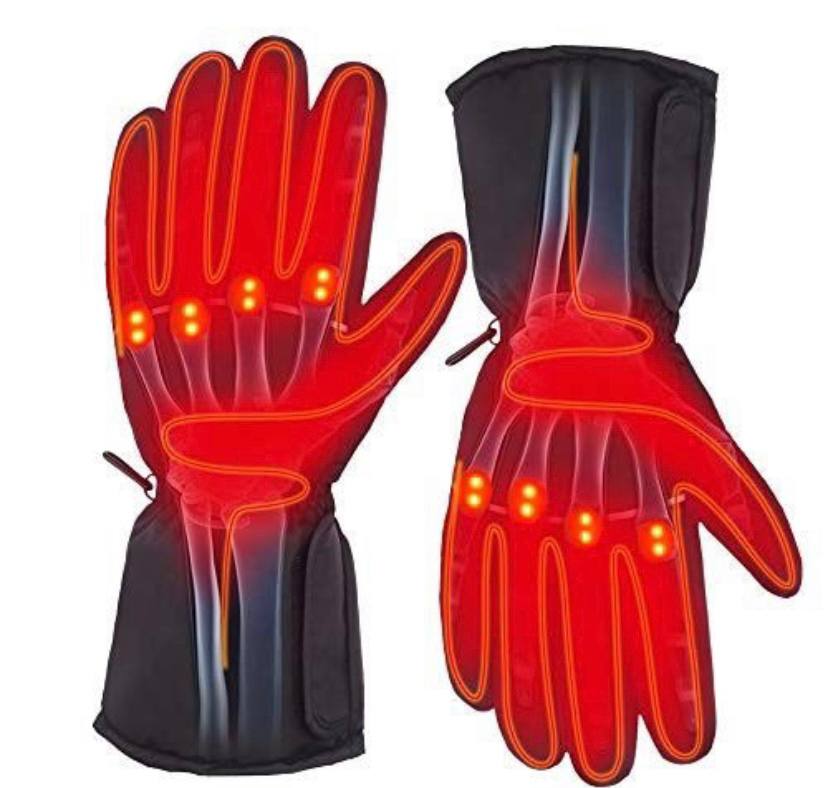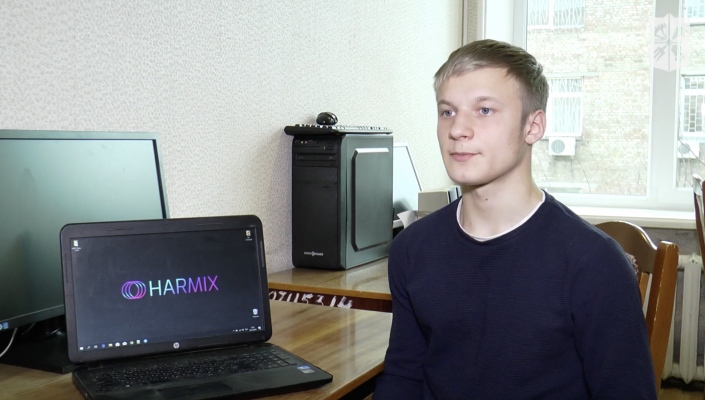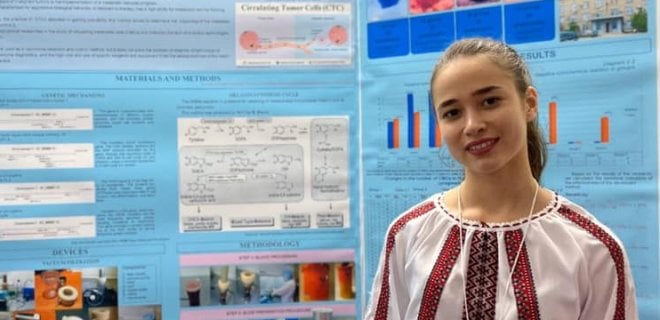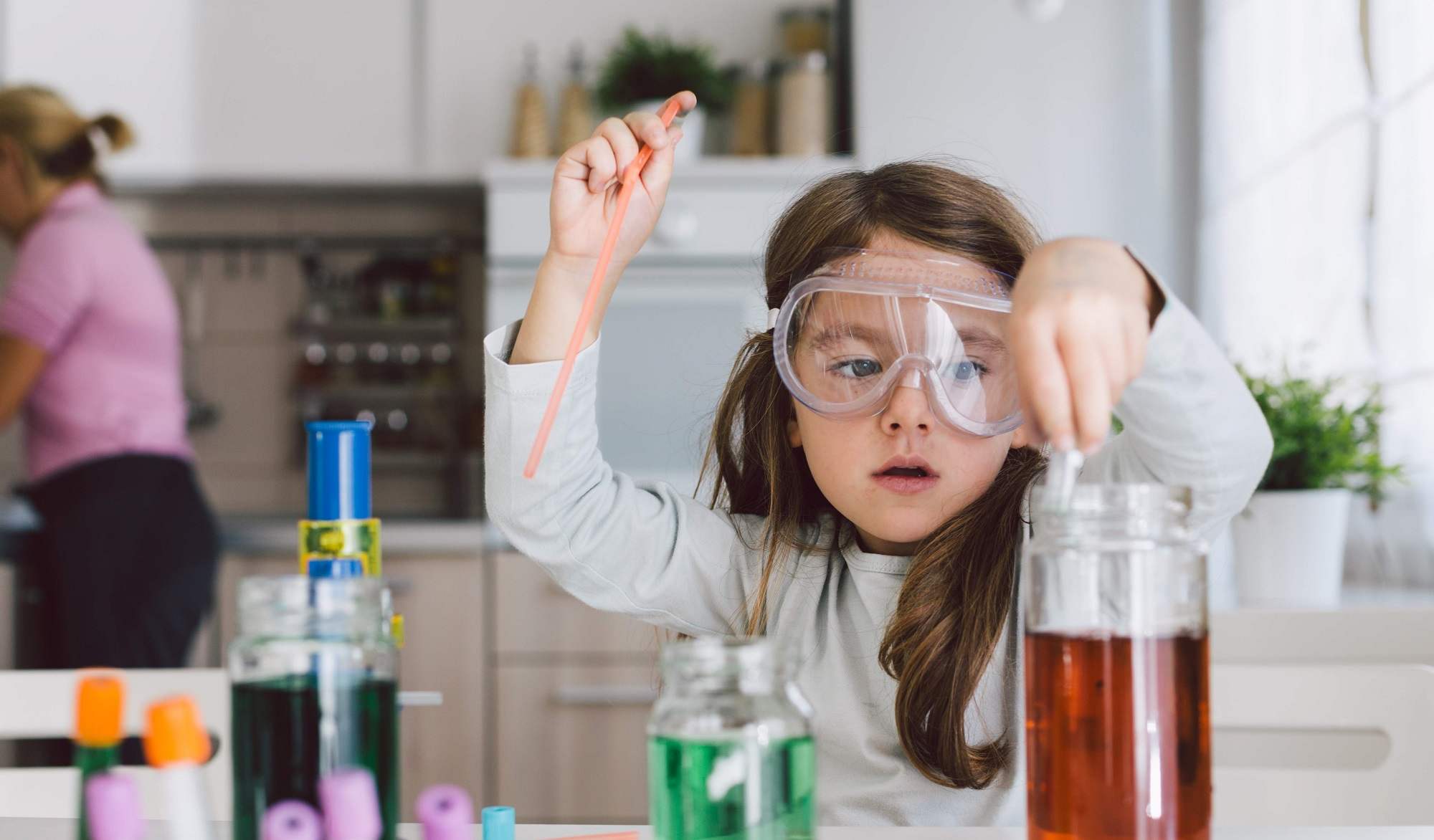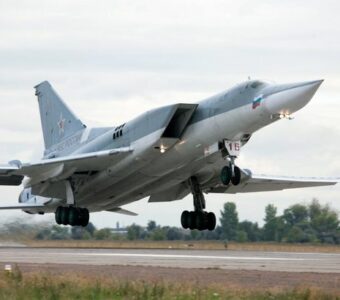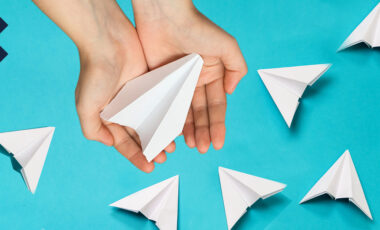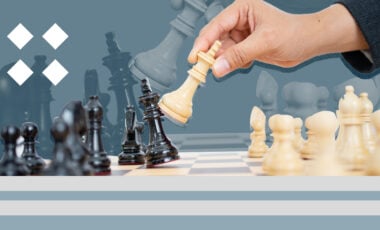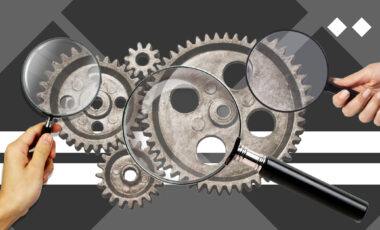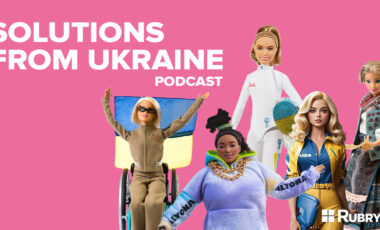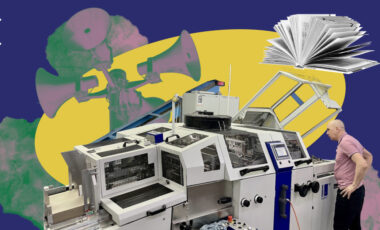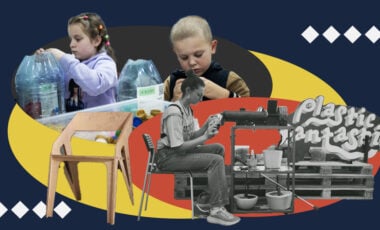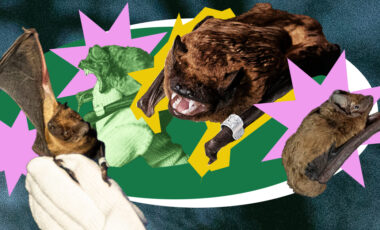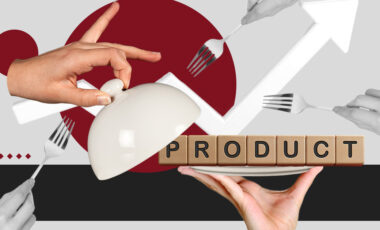Young Science: what inventions do Ukrainian schoolchildren create?
Autonomous hand warmer, the interactive Lost and Found, shadow microscope for water quality analysis, device for cancer diagnosis, smart aquarium, robot that takes care of pets, Diabetic’s Assistant telegram-bot, device for determining the quality of milk, and much more

Every year on the third Saturday of May, the world celebrates the professional holiday of scientists. This is a national holiday founded in 1997 by Leonid Kuchma. During this time, an entire generation of young inventors has grown up, who, thanks to the Minor Academy of Sciences, have the opportunity to travel the world with inventions, participate in international competitions and even build startups from their projects. Rubryka explains how they do it.
This year, 11 Ukrainian schoolchildren won 13 awards at the ICYS-2021 scientific competition in Serbia. The International Conference of Young Scientists (ICYS) is an annual event that is a kind of separate competition in physics, mathematics, ecology, and computer science. Students of secondary schools aged 14-18 who are fluent in English can take part in the competition. In 2021, 143 young researchers from 23 countries took part in the ICYS conference.
What do young Ukrainians invent?
Eleventh-grader from Zaporizhzhia Ilarion Kuleshov received gold for the developed rapid analysis of dispersed systems, a device that in a matter of seconds will determine what and how polluted the water is. Ilarion received a gold medal for his invention.
"I call my device a 'shadow microscope,' a mix of two scientific methods. The first, the Schlieren method, allows you to find optical inhomogeneities in transparent media. I also used the approaches of Leeuwenhoek, the 'father' of scientific microscopy. A drop of liquid placed in the device acts as a lens through which a beam of laser beams passes," the inventor explains. "So you can analyze water for dust, dirt, pieces of plastic. The analysis requires the device itself and a laptop with the installed program. The result appears on the screen as a graph: it shows how much and what exactly polluted the water.
The peculiarity of the inventions developed by school kids is in the simplification of processes, and also in the fact that each project is relevant in our time, and, as a rule, inexpensive in production. An example is the invention of Taisia Chursina from Kherson, who won a silver medal for an autonomous hand warmer, special gloves that help people with Raynaud's disease, a circulatory disorder when a sharp narrowing of blood vessels in the fingers and toes gets insufficient blood.
"These are gloves made of thin material weighing only 250 grams, so the functions of the palm aren't limited. They contain sensors that monitor temperature and humidity. Thanks to thermoregulation and maintenance of heat balance, the vessels remain in a normal state and the person doesn't feel discomfort," says the inventor.
Taisia has also developed a mobile glove app that helps the doctor monitor the patient's condition.
Two more silver medals went to Volodymyr Pavlenko, a tenth-grader from Kyiv, who came up with a way to save the forest ants of the extinct species Formica rufibarbis, and Viktor Ulanov, an 11th-grader from Dnipro. The boy studied self-oscillations in a hydrodynamic system; the results of his work can be used in the design of nuclear power plants.
The Ukrainian team also received two bronze medals for mathematics projects: estimating the area of the triangle, the work of Olha Hlazunova from Sumy, and mathematical modeling of large deformations of torsion of straight prisms, the work of Mykhailo Derkach from Kyiv. Danylo Kech from Kherson won two more bronze medals for physics projects for modeling Mars weather conditions and Andrii Terentiev from Dnipro for analyzing the modes of friction pendulum movement.
What will happen to these inventions?
Yevhen Kudriavets, Deputy Director of the Minor Academy of Sciences for Strategic Project Management and International Relations, Educational Diplomat of Ukraine, told us:
"The things children go to competitions with are school research projects. Among them are indeed inventions: experimental installations or new approaches to solving certain scientific problems. What happens next depends on the child's project. Some continue to improve their project and turn it into their startup, and we have good cases, to support such children, there is an incubator of the Minor Academy of Sciences."
A good example is a project of Nazar Ponochevnyi from Sikorsky KPI, called Harmix. This is a service that automatically selects music for a video, performs the task of recorded music for videos. Now the service selects tracks from the music library, and in the future, the system will be able to come up with its own, exclusive version of the combination of music and video. In 2018 in the United States Harmix was presented as a research project, and in Singapore, in 2019, as a commercial startup. In 2021, Nazar's project won the Ukrainian Startup Fund competition and a significant prize of $25,000.
20-year-old Olha Kharasakhal from Mariupol from 14 years old, since 2014, worked as a medical volunteer and eventually, with the support of parents and teachers, invented a method of early diagnosis of cancer, which is 80 times cheaper than Western counterparts. According to the student, the cost of the invented device is about 30 thousand hryvnias, and the imported analog used in the American Cell SEARCH method costs about a million dollars.
However, not all students turn their projects into startups. According to Yevhen Kudriavets, there is another way, scientific one:
"In competitions, children gain experience, learn to build their projects and present them to audiences, and at university, they make new ones, deepen their knowledge and work on another topic, which may be related to what they did. And the experience gained in school gives them a huge advantage over peers who have never done it. Of course, to be honest, there is a third way; some young people in Ukrainian universities, unfortunately, lose motivation."
I have an idea and I want to implement it. Who will help me?
Yevhen Kudriavets said that various structures of the Academy of Sciences of Ukraine and active school teachers were active in involving students in scientific activities arouse children's interest in science and help them prepare projects. Then young inventors take part in competitions and contests in Ukraine, improve their work, and the winners of all-Ukrainian competitions receive recommendations for participation in international events, where they present their research at the world level in different countries.
"The competition in Serbia is just one of the competitions. This year they have already taken place in Turkey and Malaysia, and we have already won a lot," Yevhen shares the good news. "Previously, competitions were held offline; teams traveled around the world and raised the Ukrainian flag at the opening and closing of scientific competitions, contests, and exhibitions. These trips were organized by the Academy of Sciences; delegations were gathered, trained, and accompanied from beginning to end. This year's competition was held in Serbia, but participants defended their projects online."
You can find out about competitions, Olympiads, and events held by the Minor Academy of Sciences on the institution's website. But you can look at the contestants who have already implemented their projects right now, because from 14 to 17 May, there is the largest scientific battle in Ukraine, the intellectual competition of the year, the final of the All-Ukrainian students' research paper competition of the Minor Academy of Sciences.
More than 1,100 prodigies from all over Ukraine will come together in a scientific battle and defend their projects before a professional jury. They won this opportunity among 100,000 competitors, winning the city and regional stages of the competition. Students will present their projects in 65 scientific areas. Students' projects can be viewed at the link, and watch the online broadcast of the competition on Facebook or YouTube.
How are such competitions held?
"For the second year in a row, we are forced to give up a live meeting with children and hold an online competition. But this doesn't stop our event from being a real holiday of science! The finalists of the competition are the best of the best, their projects are prepared at a high scientific level, they focus on the topics of their colleagues and ask interesting questions to each other. We have a very difficult task: to choose winners who will become real scientific stars of Ukraine," the President of the Minor Academy of Sciences Stanislav Dovhyi.
The competition consists of two main stages:
- Poster presentations and participation in a scientific conference. Only 3 minutes are given to defend the project before the jury, another 15 minutes are given to answer questions.
- The second stage is a scientific conference, where participants must identify the most important achievements of their work in 7 minutes and answer all the questions of colleagues in another 3 minutes.
Based on the poster defense, scientific conference, and correspondence evaluation, the jury members give their verdict to the participants. The winners of the defense competition will receive presidential scholarships during the year, and they will also have the opportunity to represent Ukraine at international competitions and contests.
What surprises do young scientists bring in 2021?
This year's developments and research of students are completely "non-childish." The top topic among students is the COVID-19 virus, its consequences, and suggestions for overcoming them. This topic covered participants who conducted research not only in the field of medicine but also in economics and public administration.
"We have recorded more than 20 projects dedicated to the study and overcoming of COVID-19. This is not surprising, because science is the first to respond to the challenges and problems facing society, and most importantly, it offers solutions. Students don't stand aside: we brought up conscious, caring citizens," says Stanislav Dovhyi.
Projects are not limited to the coronavirus; children continue to develop solutions to other pressing issues. A popular topic among young researchers is energy-efficient technologies. Anna Tumanova from the Kirovohrad region has found an alternative to synthetic materials, insulation from cattail inflorescences. And Volodymyr Stepanov from the Volyn region has developed alternative energy sources for planetary exploration and space exploration.
Many inventions are aimed at facilitating human life and everyday life. One of them is a mobile application of a hairdresser, a project by Dmytro Kyzylov from Donetsk. The application allows accurate diagnosis before coloring, determines the desired result of staining, forms an electronic queue, and more. Or a modern interactive service for finding lost items, the know-how of Dmytro Soltysiuk from the Volyn region, saves time and increases the chances of finding a lost item: you only need to place ads on the server. In addition, there is a smart aquarium, a robot that takes care of pets, a Diabetic's Assistant Telegram bot, a device for determining the quality of milk, and much more.


